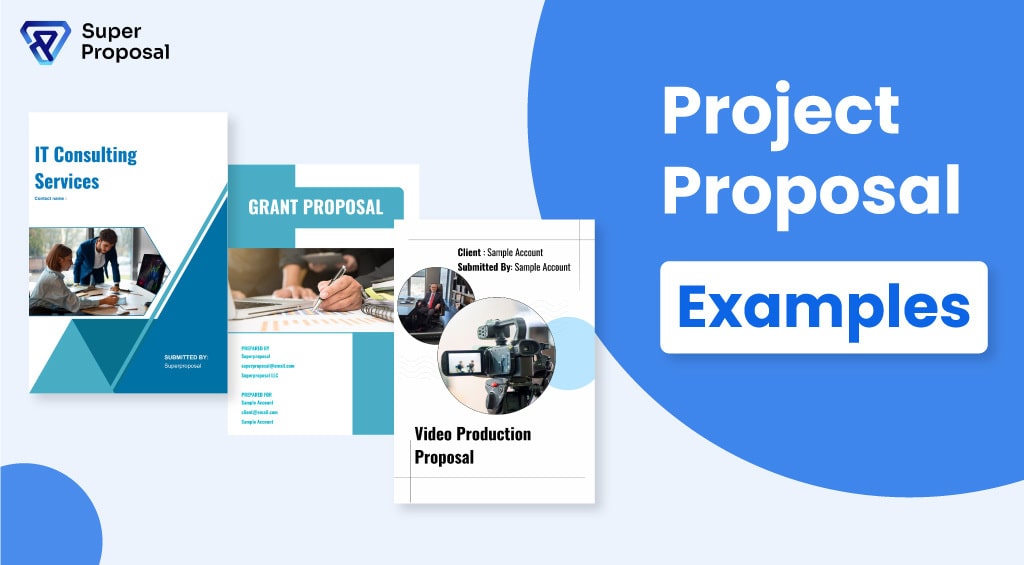Cover letter vs Executive Summary: What’s the difference?
AUG 27, 2024 | LAST UPDATED ON AUG 27, 2024 BY ANGELICA NAIDU

Proposals offer a chance to strut your stuff, display to the world how great you are at what you do, and win new business. But it’s not always easy to get your reader’s attention; certainly, that’s not reliably done by a good proposal, no matter how skillfully it’s crafted. For an edge in today’s fiercely competitive proposal-writing environment, you need a cover letter or executive summary.
These documents are your first touchpoints, setting the tone for the remainder of your proposal and dictating how much further decision-makers will go into your offerings. Let’s dissect the difference between cover letters and executive summaries, discuss their special purposes, and give you the knowledge to help you create impactful introductions to truly leave a lasting impression.
Table of Contents
ToggleWhat is the difference between a cover letter and an executive summary?
Feature | Cover letter | Executive summary |
Purpose | To introduce yourself or your company and express your interest in the opportunity. It’s your chance to make a personal connection and highlight your qualifications briefly. | To provide a concise overview of the entire proposal, including the problem, solution, benefits, and value proposition. It’s designed to give readers a quick understanding of your proposal’s key points. |
Placement | Typically, it is submitted as a separate document before the proposal itself. | Usually included at the beginning of the proposal document. |
Tone | More conversational and personalized. You can express enthusiasm and briefly mention relevant experience. | Formal and focused. It should be concise and factual, highlighting the most important aspects of your proposal. |
Content | Briefly mention your qualifications, relevant experience, and why you’re a good fit for the project. | Summarize the problem or need, your proposed solution, the key benefits of your solution, and why your solution is the best choice. |
Length | Typically, one page or less. | Usually one to two pages, depending on the complexity of the proposal. |
Audience | Often read by hiring managers, recruiters, or decision-makers who may not be technical experts. | Often read by busy executives or decision-makers who need a quick overview before deciding whether to read the entire proposal. |
Cover letter
What is a cover letter?
A cover letter is your chance to make the first positive impression on the reader. This is a one-pager aimed at introducing either you or your business and showing your interest in the opportunity that is being presented. This you can simply explain to be your chance to express yourself and expressing your passion and your expertise, as much as you can, with all the brevity and professionalism.
Key elements of a compelling cover letter
Here are the key elements of a compelling cover letter:
Personalized greetings: Your letter should start with the name of the recipient. This brings out the element of detail and how important their time is.
Strong opening line: Catch the reader with an amazing opening line. Let them know in a line or two why you feel this opportunity is interesting or make a reference to something that’s specific to the recipient’s RFP or an earlier conversation.
Value proposition: Convince the reader in the shortest terms possible of how the skills and expertise you possess will be of benefit to them. Clearly state how you are unique, drawing upon past successes or outcomes that lift up exactly why this particular value proposition exists.
Call-to-Action: Respectfully ask the client to review the entire proposal and express your interest in the opportunity to discuss it further—perhaps even by suggesting a meeting or call.
Professional closing: End the letter with a professional closing, like “Sincerely” or “Best regards,” with your name, title, and contact information.
Cover Letter example 1
[Your Company Letterhead]
[Date]
[Client Name][Client Title][Client Company][Client Address]
Dear [Client Name],
I am writing to you on behalf of [Your Company Name], one of the leading [Your Company’s Core Services/Products]. We have closely watched your work at Customer’s Company, especially given the development and response of the customer on [The customer has a particular challenge or opportunity].
We have the experience of helping companies like yourself get past similar issues and do big things. For instance, we recently helped [a similar customer] achieve [attainment of the outcome].
We understand that [Client’s Challenge] is a serious inhibitor to growth, so we’ve developed a pretty wide range of tailored solutions to address common issues you’re likely to run into.
I would welcome the chance to have a short meeting to discuss how [Your Company Name] can help you meet [Specific goals you would be able to help them achieve].
Sincerely,
[Your Name][Your Title][Your Company Name][Your Contact Information]
Read more: 4+ Proposal Cover Letter Templates
Best Practises for Cover Letter Success
Here are the best practices for creating a great cover letter:
- Tailor it to the opportunity: Research the organization to which you are sending your letter and demonstrate your alignment with the goals and needs of that organization.
- Keep it concise and focused: A page is a nice target, be as direct as possible and keep your language clear. Avoid jargon with a minimum of setup.
- Proofread: Errors can really undermine your professionalism, so look out for common ones in your working environment and run your document by a friend or mentor.
- Use a professional format and proposal software: Choose a clean, readable font and a consistent format. Consider using proposal software like Super Proposal to streamline the creation process and ensure a polished final product.
Common Mistakes to Avoid
Here are the common mistakes you need to avoid while writing a cover letter:
- Generic language: Do not write in pat generalities or bumper sticker-like phrases. Be specific and demonstrate how you stand out as a candidate.
- Overselling or exaggerating: Confidence is good, but don’t overstate to the point of promising more than you can reasonably deliver or to the point of hyperbole.
- Negativity: Neither should competitors be criticized nor should the focus be on past failures. It’s a positive approach that should be applied with a view in the future.
- Ignoring the RFP: If the recipient has referred to a request for a proposal, then it should be read carefully, and your cover letter should ensure that their specified requirement has been considered while writing this proposal.
Executive summary
The proposal executive summary basically will encapsulate your whole proposal into an overview. It is designed to give busy decision-makers an insight into your key ideas without their having to go through the document in its entirety. Consider it an “elevator pitch” of your proposal. If the executive summary is strong, it will arouse the reader’s curiosity to go on reading your proposal.
Key Elements of Compelling Executive Summary
Here are the key elements of writing a compelling executive summary:
- Problem Statement: Clearly and concisely indicate the problem or challenge that will be the subject of your proposal; use data or statistics, if relevant, to illustrate the magnitude of the problem.
- Proposed Solution: Briefly describe your preferred solution or approach. Highlight special attributes and benefits. Do not get too technical in developing this; instead, focus on the results and the potential that your solution brings.
- Key Benefits: Outline specific benefits that your solution will bring. These benefits should either be based directly on what the recipient has mentioned in his/her RFP or discussions and on the recipient’s goals and priorities or its critical attributes. As much as you can, quantifying would be useful.
- Value Proposition: Describe why your solution is best-in-class against alternatives, touting your company’s unique strengths, experience, or innovative approach. Emphasize what values you will bring to the table.
- Call to Action: Close with a robust call to action that invites the reader to review your full proposal, contact you for further discussion, or provide the next steps in the decision-making process.
Executive Summary Example
You may not know this, but 97% of consumers go online to find local business information. A low-functioning website is more than an inconvenience; it’s a lost opportunity to connect with prospects and grow your business. Your present website might work, but it isn’t optimized for conversions—leaving you with a big loss in revenue.
At [Your company name], we take poor-performing websites and turn them into a sales machine. Proven strategies that helped our clients increase conversions up to 10 times—now, their online presence has become an engine of revenue.
We are going to deliver one of the best website optimization plans, hitting the pain points of your current site. Right from the design of your website to user experience and conversion funnel, everything will be duly probed into and then strategically moved toward the adoption of the best practices with a view to enhancing engagement and driving sales.
Our accomplished web designers, developers, and marketers have a history of producing measurable results. We have served many businesses across industries in maximizing their online performance—from generating 150% leads for Client A to converting 100% leads for Client B.
Ready to turn your website into high-performing assets? Let’s discuss how to help you achieve your business goals through an effective website optimization strategy plan. Contact us today for a consultation.
Best Practices for Executive Summary Success
Here are the best practices for writing an executive summary:
- Write it last: The key is to write the executive summary when you are done with the rest of the proposal. That will serve to make sure your whole offer is reflected in it.
- Keep it concise: The ideal length of the summary can be put into one or at most two pages. Most decision-makers are hard-pressed for time and appreciate a summary that is brief.
- Focus on results: Use strong verbs and, if you can, quantify the solution’s result. Avoid fussy language and generalities.
- Use visuals: If this has a useful purpose in explaining some key points, you could use charts, graphs, or diagrams to make your executive summary more interesting.
- Leverage technology: Opt for a clean, professional font and layout. Consider using proposal software like Super Proposal to create visually appealing, customizable, and error-free cover letters efficiently.
Common Mistakes to Avoid
Here are the common mistakes you need to avoid while writing an executive summary:
- Including too much detail: Tempting as it might be, resist the urge to include every detail of your proposal in your executive summary. Summarize only the most important things that absolutely must be understood or remembered.
- Being too technical: Avoid using jargon and words that the reader is unlikely to understand. Plain language is easy to digest.
- Neglecting proofreading: Typos and grammatical errors will ruin your credibility. Either go through your executive summary carefully yourself or have someone else proof it.
Cover Letter vs Executive Summary: Bottom Line
The art of developing powerful cover letters and executive summaries represents the difference between success and failure when it comes to proposals. Always remember that your cover letter is your first handshake, showing your interest and leading with your qualifications, and your executive summary explains why your proposal has merit.
Elevate your cover letters and proposals with Super Proposal. Try it for free today and experience the difference a professionally crafted proposal can make.
Read more: How To Write A Technical Proposal
Increase your close rates today!
Secure every pitch that you make with Super Proposal. Craft winning proposals, share and track them on a single, comprehensive platform.
✓ 15-Day Trial. No Credit Card Required.

Recent Post



